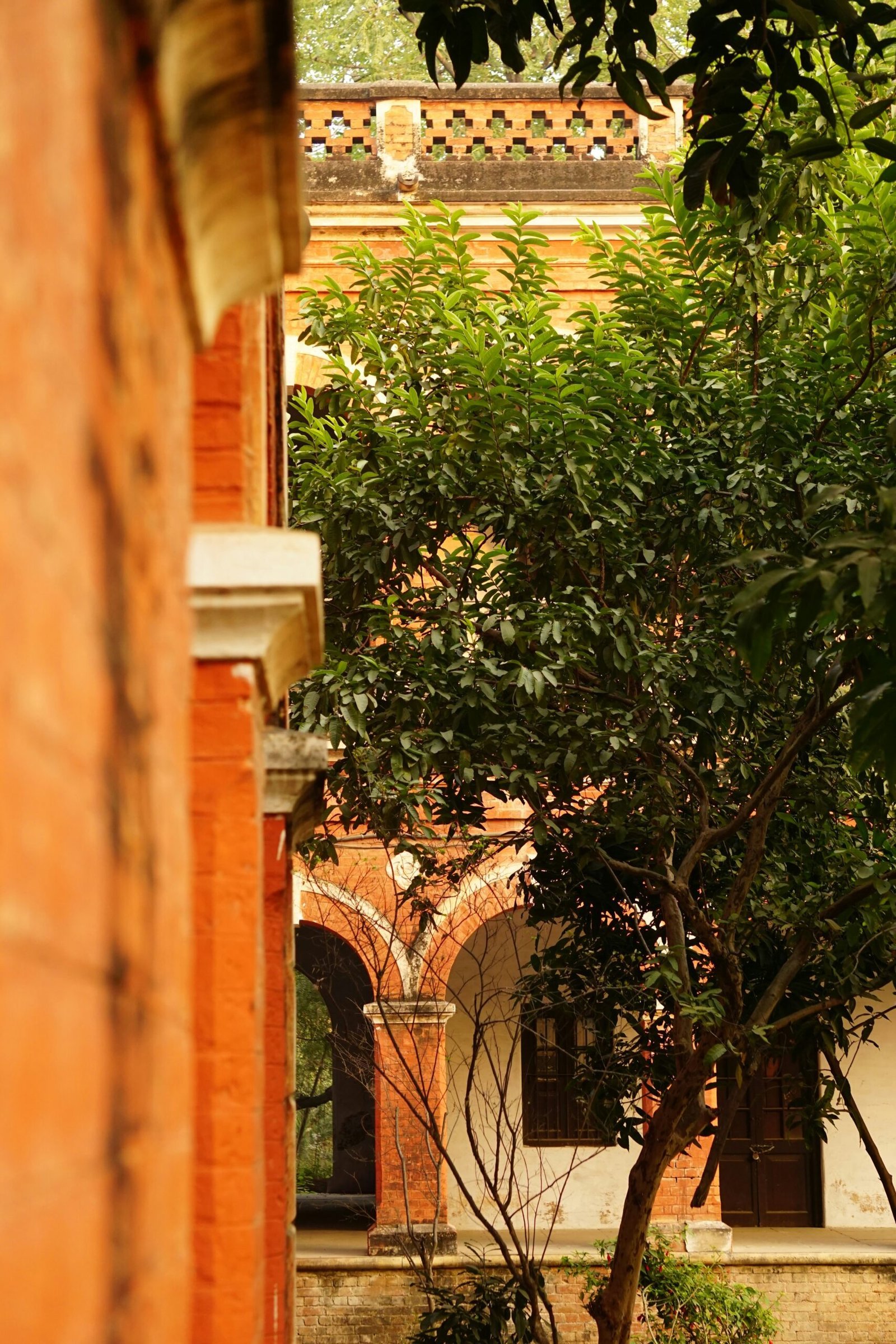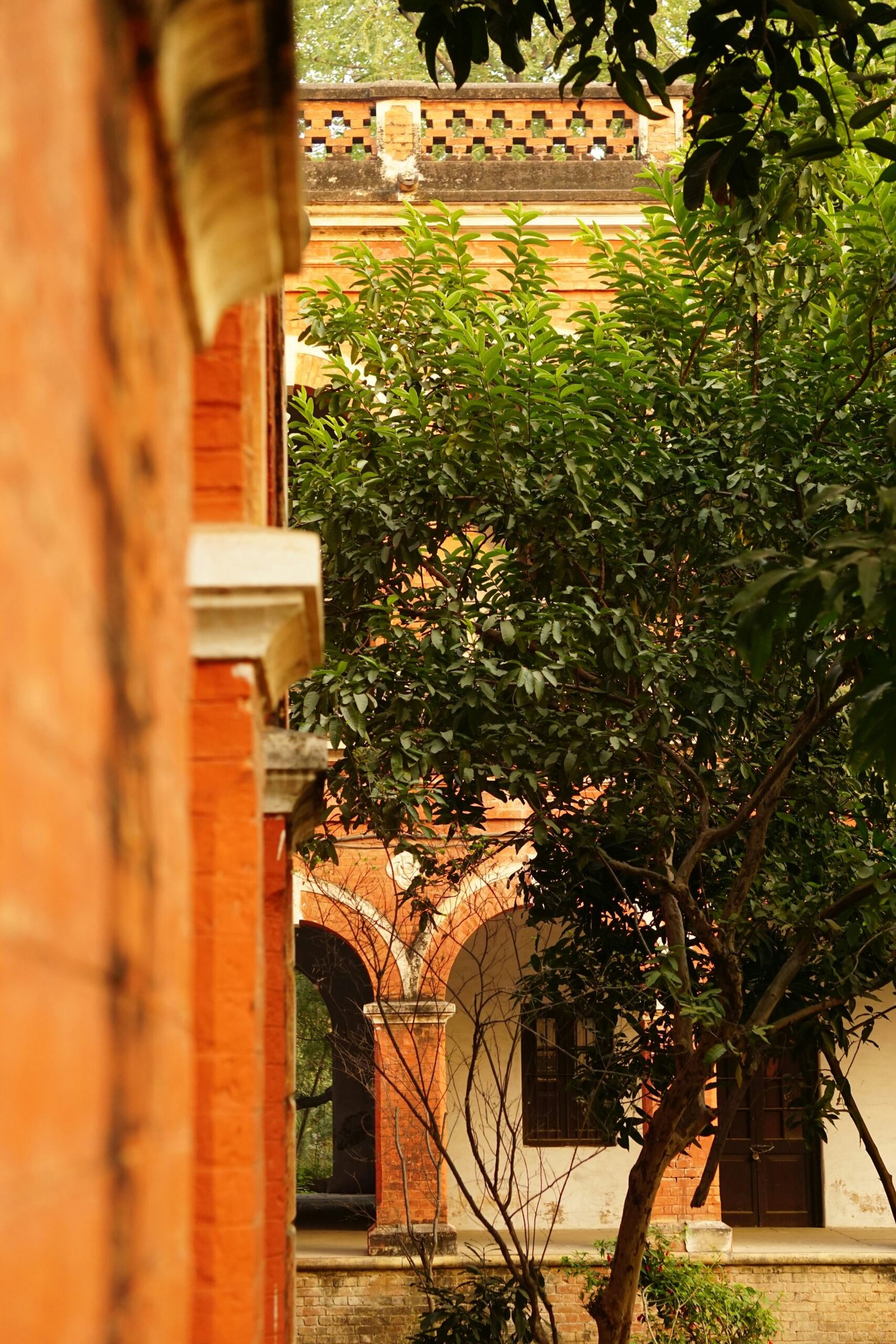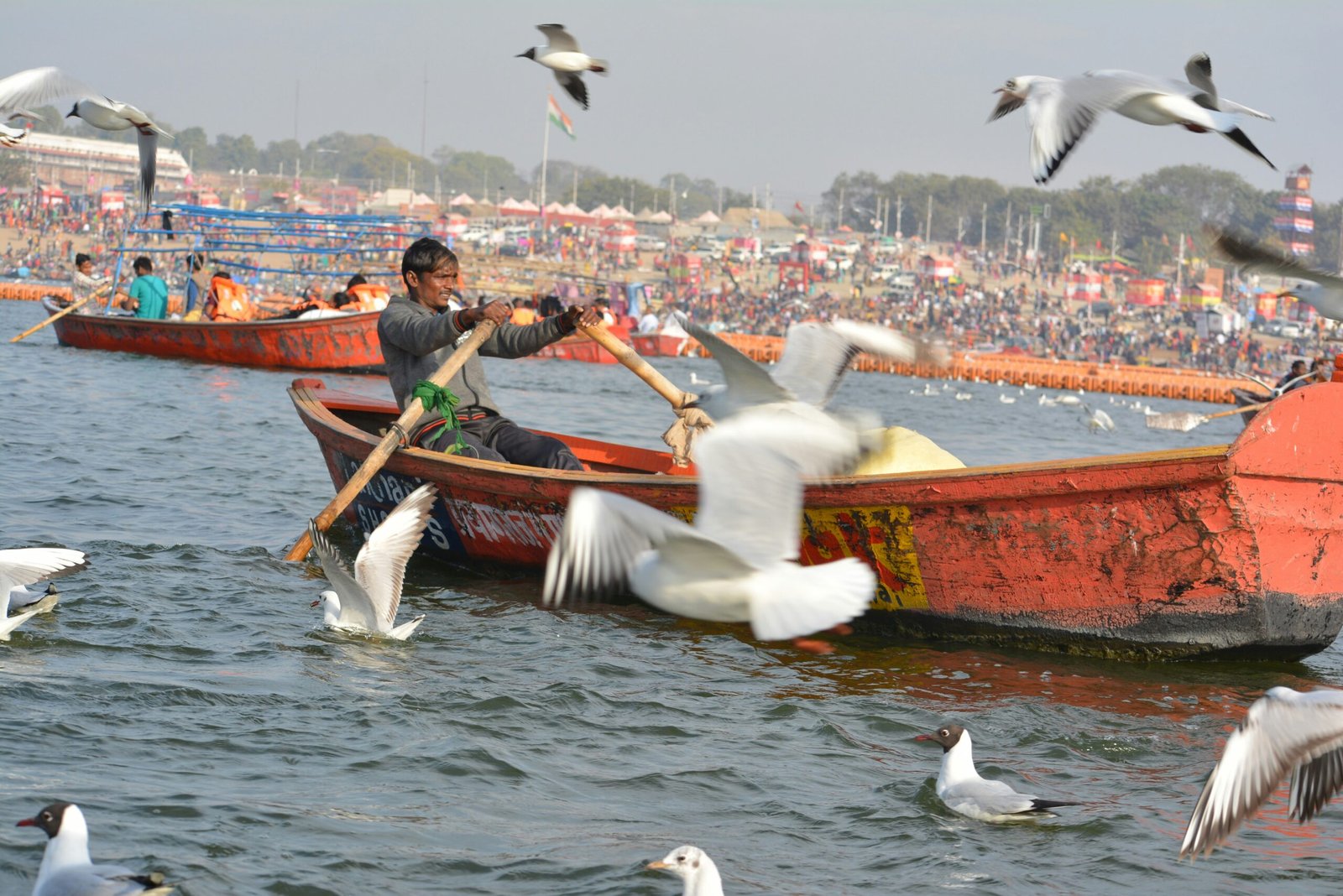Introduction to the Kumbh Mela
The Kumbh Mela stands as a monumental event in the Hindu calendar, deeply rooted in tradition and belief. Dating back thousands of years, its origins are entwined with ancient Hindu mythology, particularly the legendary churning of the ocean (Samudra Manthan), where gods and demons vied for the elixir of immortality. A few drops of this divine nectar are said to have fallen at four sacred locations—Haridwar, Ujjain, Nashik, and Prayagraj—giving rise to the Kumbh Mela at these sites. The festival is recognized not only for its historical significance but also for being one of the largest religious gatherings worldwide, drawing millions of devotees and pilgrims seeking spiritual solace and enlightenment.

The Prayagraj Kumbh Mela, specifically, is notable for its unique features. Taking place every twelve years, it incorporates the Ardh Kumbh Mela every six years, maintaining a robust cycle that draws attention to the evolving cultural practices and rituals associated with the event. The sight of vast numbers of people engaging in sacred bathing at the confluence of the Ganga, Yamuna, and the mythical Sarasvati rivers marks a rite of passage for many individuals. The opportunity to cleanse one’s sins and attain liberation through these rituals underscores the Kumbh Mela’s spiritual essence.
Beyond the immediate religious context, the Kumbh Mela is a rich tapestry of diverse cultural expressions that encapsulate Hindu traditions. Various social activities, camps, and discussions engage pilgrims in reflection and community-building. Notably, saints and spiritual leaders from different sects gather, imparting valuable insights and teachings at this grand congregation. Therefore, each occurrence of the Kumbh Mela, particularly the Prayagraj iteration, holds unique significance, symbolizing both a return to spiritual roots and an exploration of contemporary Hindu identity.
Historical Background of Prayagraj
Prayagraj, formerly known as Allahabad, is a city steeped in rich history and cultural significance, particularly within the context of Hindu traditions. The city’s roots can be traced back to ancient times, where it is believed to be a confluence of three rivers—the Ganges, the Yamuna, and the unseen Saraswati. This sacred confluence, known as Triveni Sangam, holds immense spiritual relevance and has positioned Prayagraj as a significant pilgrimage site for centuries.
According to Hindu mythology, Prayagraj is intricately linked to several ancient texts and epics. The city is prominently mentioned in the “Mahabharata,” where Lord Brahma allegedly performed a Yagna, solidifying its status as a divine location. Furthermore, it is recognized as the site where Lord Rama, Sita, and Lakshmana stopped during their exile, thereby cementing its place in the hearts of numerous devotees.
Over the ages, Prayagraj has evolved through various historical epochs, each contributing to its cultural mosaic. During the Mughal era, under the guidance of Emperor Akbar, Allahabad Fort was constructed, further enhancing the city’s strategic and spiritual significance. The British colonial period also left visible marks on the city’s infrastructure, as it became an important administrative center in North India. With the introduction of modernity, Prayagraj’s importance remained unwavering as it continually attracted pilgrims and scholars alike.
The Kumbh Mela specifically finds its roots in the city’s historical narrative, as it serves as the gathering point for millions of pilgrims seeking spiritual cleansing and rejuvenation. Through the shared faith and timeless stories that transcend generations, Prayagraj has maintained its revered status as a pivotal location for the Kumbh Mela, drawing from a legacy that spans many centuries. This historical depth continues to enrich the collective consciousness of those who participate in and witness the Kumbh Mela.
Why Prayagraj Kumbh Mela 2025 is Unique
The Prayagraj Kumbh Mela 2025 stands out for several significant reasons that set it apart from previous gatherings. One of the most notable aspects is the timing of the festival, which will coincide with the celestial alignment of planets that occurs once every 12 years. This particular occurrence, known as a Maha Kumbh, is believed to amplify the spiritual energy and sanctity of the pilgrimage, drawing a larger influx of devotees in search of blessings and spiritual renewal.
Moreover, the number of expected pilgrims for the 2025 Kumbh Mela is projected to reach unprecedented levels. Estimates suggest that over 150 million visitors could descend upon Prayagraj, making it one of the largest gathering of people globally. This influx not only underscores the event’s significance but also demonstrates the growing interest in spirituality and traditional practices among both domestic and international travelers, highlighting the festival’s role as a vital cultural phenomenon.
Additionally, Kumbh Mela 2025 will feature unique themes and activities aimed at enhancing the overall experience for attendees. Organizers have announced a focus on eco-friendliness and sustainability, incorporating initiatives to minimize the environmental impact of such a massive event. There will be a special emphasis on cleanliness, waste management, and the promotion of green practices, appealing to the growing global demand for environmentally conscious participation.
Furthermore, technological advancements will also play a role in the 2025 Kumbh Mela, with enhanced facilities for pilgrims including digital platforms for registration, real-time updates on event schedules, and improved navigation assistance via apps. This integration of modern technology caters to the diverse needs of participants and enhances accessibility. Overall, these factors contribute to the unique character of the Prayagraj Kumbh Mela 2025, making it a landmark event in the spiritual calendar.
Spiritual Significance of the Kumbh Mela
The Kumbh Mela, one of the largest religious gatherings in the world, holds immense spiritual significance for millions of Hindus. This festival symbolizes a unique blend of devotion, belief, and tradition, as it allows devotees to seek spiritual rejuvenation through sacred rituals. The core of the Kumbh Mela revolves around ritual bathing in the holy rivers, primarily the Ganges, Yamuna, and Sarasvati, which is seen as essential for spiritual purification. The act of bathing at designated times is believed to cleanse the soul of sins and promote inner peace, contributing to one’s spiritual well-being.
One of the most revered aspects of this event is the ‘shahi snan’ or royal bath, which is a significant ritual performed by saints and spiritual leaders. This auspicious occasion, where the elite of the spiritual domain bathe on specific days deemed most favorable, is accompanied by a vibrant display of processions, marking it as a critical event within the Kumbh Mela. For many participants, ‘shahi snan’ not only represents a moment of physical purification but also serves as a channel for connecting with the divine. The collective energy and devotion witnessed during this period amplify the spiritual vibrations, making it a unique experience for attendees.
Participation in the Kumbh Mela is also viewed as a means of accumulating ‘punya’ or merit, which plays a vital role in Hindu spirituality. Engaging in this festival fosters a sense of community amongst devotees, nurturing spiritual bonds and enhancing collective devotion. By partaking in the myriad rituals, prayers, and gatherings at the Kumbh Mela, individuals believe they collect divine blessings and enhance their spiritual journeys. Hence, the Kumbh Mela stands as a profound intersection of spirituality, tradition, and communal identity, re-affirming its significance in the lives of countless devotees.
Cultural Festivities and Activities
The Prayagraj Kumbh Mela 2025 promises to be a grand confluence of spirituality and rich cultural heritage, offering a myriad of events that reflect the diverse traditions of India. The festival will host a wide array of religious discourses delivered by revered saints and spiritual leaders, providing attendees with insights into spiritual practices and philosophical teachings. These discourses will not only enhance the devotional experience of the pilgrims but also foster a sense of unity and collective reflection among participants.
In addition to religious discussions, participants can anticipate engaging traditional performances that showcase India’s artistic wealth. Folk dances, classical music recitals, and theatrical presentations will illuminate the vibrant tapestry of Indian culture. Local artists and performers will take the stage, offering visitors a glimpse into the age-old traditions that continue to thrive in contemporary settings. These performances serve to entertain as well as educate, bridging generational gaps and preserving cultural narratives.
The culinary offerings at the Kumbh Mela will also play a significant role in enhancing the cultural experience. Attendees can savor a variety of local delicacies, ranging from vegetarian offerings to street food that reflects the region’s gastronomical diversity. The culinary experience will not only tantalize the taste buds but also encourage visitors to appreciate the significance of food in Indian culture, especially in the context of religious festivities.
Moreover, the crafts and artisan stalls at the Kumbh Mela will provide a platform for local artisans to exhibit their skills and products. Visitors can explore intricate handicrafts, textiles, and artwork that embody the essence of Indian craftsmanship. By showcasing their creations, artisans contribute to the festive atmosphere while educating visitors about traditional techniques and cultural significance.
Environmental and Social Initiatives
The Prayagraj Kumbh Mela, which is set to take place in 2025, is not just a significant religious event but also a platform for promoting critical environmental and social initiatives. Recognizing the immense impact of such a colossal gathering on the surroundings, organizers are prioritizing sustainable practices to minimize ecological footprints. This approach aims to ensure that the sacred event aligns with contemporary environmental standards and is suitable for future generations.
One of the foremost initiatives includes implementing a comprehensive waste management system. The Kumbh Mela is expected to attract millions of pilgrims, and managing the extensive waste generated will be crucial. Organizers are adopting strategies such as providing biodegradable materials for food and ensuring proper segregation of waste at source. Additionally, an extensive recycling program will be established, promoting awareness about the importance of maintaining cleanliness during this spiritual journey. This initiative not only safeguards the environment but also fosters a culture of responsibility amongst attendees.
Furthermore, community welfare plays a pivotal role in the planning of Kumbh Mela 2025. Local populations will be involved in various service projects and employment opportunities associated with the festival, ensuring that the benefits are distributed among residents. Initiatives such as skill training workshops and health camps will be organized, focusing on empowering local communities and enhancing their overall well-being. The integration of local artisans and businesses will also be promoted, encouraging cultural exchange and boosting the regional economy.
In addition, specific efforts will be directed towards preserving the Ganges River’s sanctity, as it holds immense spiritual significance. Programs aimed at water quality monitoring and pollution control will be actively facilitated. These initiatives will serve to uphold the sacredness of the river while addressing critical environmental concerns, ensuring that the Kumbh Mela not only enriches the spiritual lives of pilgrims but also fosters a healthier ecosystem for all.
Safety and Logistics for Pilgrims
The Prayagraj Kumbh Mela, one of the largest religious gatherings in the world, necessitates thorough planning regarding safety and logistics due to the immense influx of pilgrims. In preparation for the event, authorities are committed to ensuring that every participant experiences a safe and meaningful spiritual journey. Comprehensive logistical arrangements have been laid out to facilitate the smooth movement of thousands of pilgrims arriving from diverse regions.
Transportation to and from the Kumbh Mela site is a primary consideration. A multi-modal transport system, including buses, trains, and even air travel, is coordinated to manage pilgrims’ flow effectively. Special trains and additional bus services are often introduced leading up to the event to handle surges in passenger numbers. The roadways surrounding Prayagraj are meticulously monitored and will have dedicated routes to alleviate congestion, thereby ensuring the safety of attendees.
Accommodation is another critical logistical aspect addressed ahead of the Kumbh Mela. The government collaborates with local hotels, guesthouses, and temporary tents to provide comfortable lodging options for the pilgrims. Additionally, arrangements for community kitchens serve nourishing meals that are both hygienic and diverse. Medically, numerous health camps and temporary hospitals are established, equipped to handle emergencies and provide healthcare to attendees, ensuring their physical wellbeing during the festival.
Safety protocols are also robustly outlined. Authorities typically deploy a large contingent of security personnel, strategically stationed throughout the venue to maintain order. Surveillance systems, including drone technology and camera monitoring, play a vital role in maintaining a secure environment. These measures collectively contribute to making the Prayagraj Kumbh Mela not just a spiritual journey but also a safe and organized experience for all pilgrims involved.
International Participation and Global Interest
The Kumbh Mela, one of the largest spiritual gatherings in the world, continues to attract not only millions of pilgrims from India but also an increasing number of international visitors. Its significance transcends geographic boundaries, igniting global interest in spiritual practices and cultural traditions. This event represents a confluence of faith, culture, and community, leading to an enriching experience for both domestic and international participants.
One of the most noteworthy aspects of the Kumbh Mela is its role in cultural exchange. With its rich tapestry of rituals, traditions, and spiritual teachings, the event fosters an environment where diverse cultures intersect. International attendees engage with local customs, learn about Hindu spirituality, and participate in various ceremonies, enriching their understanding of global traditions. The multitude of people coming together creates a dynamic platform for dialogue and sharing of experiences, making the Kumbh Mela not just a religious event but a global cultural phenomenon.
The presence of global religious leaders and spiritual gurus at the Kumbh Mela further amplifies the event’s international appeal. Leaders from various faiths attend, promoting interfaith dialogue and emphasizing shared values. Their participation highlights the essence of the Kumbh Mela as a gathering that transcends religious boundaries, thereby fostering a sense of unity among different communities. This not only enhances the event’s spiritual dimension but also encourages global cooperation and understanding.
Moreover, the Kumbh Mela serves as a bridge for establishing a global community by inviting individuals to experience spirituality beyond their local contexts. This initiative inspires attendees to embrace a holistic approach to faith and wellness, promoting values such as compassion, respect, and shared human experience. Such efforts redefine the Kumbh Mela, positioning it as a significant spiritual event that resonates with people from various walks of life around the world.
Conclusion and Invitation to Experience Kumbh Mela 2025
The Prayagraj Kumbh Mela 2025 stands as a beacon of spirituality, inviting individuals from diverse backgrounds to gather in a celebration of faith, culture, and unity. This significant event not only marks a key moment in the calendar for numerous devotees but also serves as a vibrant symbol of interconnectedness among humanity. Each Kumbh Mela serves as a reminder of the shared values and collective aspirations that transcend geographical, cultural, and religious boundaries.
As we approach the Kumbh Mela in 2025, participants and visitors alike will have an opportunity to immerse themselves in a myriad of religious practices, traditions, and rituals that highlight the depth of Indian spirituality. The festival is a confluence of diverse beliefs, showcasing an array of spiritual discourses, cultural performances, and opportunities for personal reflection. With millions expected to visit Prayagraj during this period, the Kumbh Mela will once again emphasize the significance of communal harmony and shared faith.
Furthermore, the Kumbh Mela acts as a vital platform for dialogue and understanding, encouraging people to engage with one another in meaningful ways. It is here that traditions are preserved, stories are shared, and connections are forged. The Kumbh Mela is truly an invitation to witness firsthand the beauty of devotion and the spirit of togetherness that characterizes this renowned festival.
In light of its immense significance, we extend a heartfelt invitation to all to experience the Prayagraj Kumbh Mela 2025. Whether you are a seasoned pilgrim or new to the traditions, your presence will contribute to the rich tapestry of this event. Embrace this unique opportunity to partake in a transformative journey that reflects the essence of faith, unity, and spirituality.


Pingback: Top 7 Significance of Kumbha Mela: Exploring Its Importance